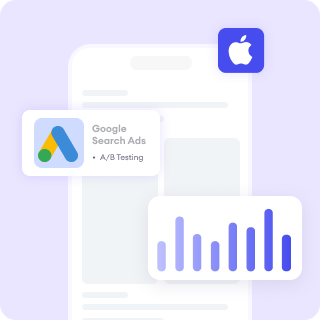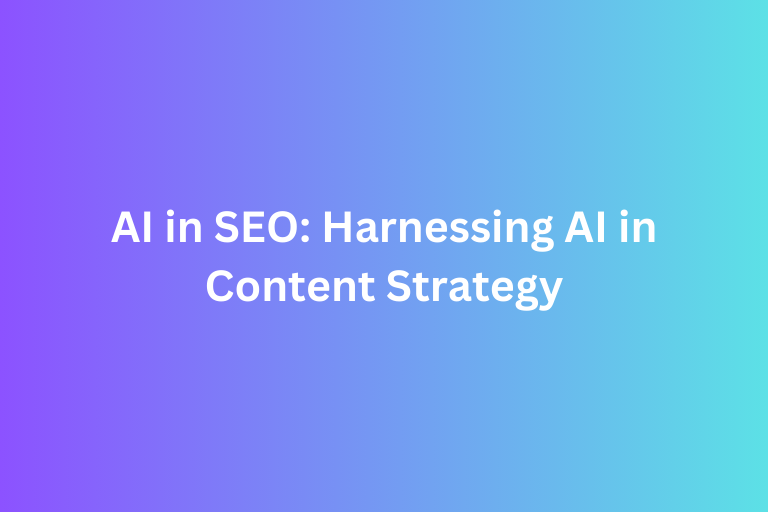With the integration of AI into search algorithms, the rise of zero-click results, and evolving user expectations, simply ranking on Google is no longer enough in 2025.
Marketers must not only implement strong SEO strategies but they must be able to measure their impact. That means going beyond vanity metrics like traffic volume and understanding which key performance indicators (KPIs) truly reflect SEO success.
Whether you’re reporting to stakeholders, optimizing content for conversions, or training a new class of digital marketers, mastering the right SEO metrics is essential to driving long-term growth and demonstrating ROI.
Learn more: Why You Need SEO For Your Business Growth
Section 1: Core SEO Metrics to Track in 2025
Let’s begin with the foundational metrics. These are the essentials every SEO professional should be monitoring consistently.
1. Organic Traffic
Organic traffic is the number of users who find your site via unpaid search results. It’s still one of the most important indicators of SEO health, but in 2025, context is key.
What to watch:
- Is the traffic growing steadily over time?
- Is it driven by high-intent keywords?
- Are certain pages bringing in more organic sessions than others?
Pro tip: Use Google Search Console to isolate brand vs. non-brand traffic. Non-branded traffic often better reflects the strength of your SEO strategy.
2. Keyword Rankings (Evolved with AI & SERP Features)
Tracking keyword positions is more nuanced than before. With featured snippets, knowledge panels, image packs, and video carousels, position #1 isn’t always the most visible.
What to watch:
- Are you appearing in featured snippets or People Also Ask?
- Are your most valuable commercial-intent keywords climbing?
- Are AI-powered SERP changes pushing your listings down?
For example, if you rank #3 for “best CRM for small business,” but the first two results are ads, and position #1 is a featured snippet, your actual visual ranking may be lower than you think.
Learn more: Guide to Ranking for Rich Snippets & Knowledge Panels Using Schema Markup
3. Click-Through Rate (CTR) from SERPs
Ranking well doesn’t guarantee visits. That’s why organic CTR, the percentage of users who click on your result after seeing it, is critical. With Google’s continued use of UX signals in ranking (Core Web Vitals, etc.), these engagement metrics carry even more weight.
What to optimize:
- Page titles and meta descriptions (especially with AI rewriting them more often).
- Rich results (FAQs, star ratings, etc.)
- Brand appeal (people click on familiar, trusted domains).
Tip: Pages with a high impression count but low CTR may need better messaging in titles and meta descriptions.
4. Bounce Rate & Dwell Time
These two metrics help assess whether your content is engaging and useful.
- Bounce Rate measures how often users leave after viewing just one page.
- Dwell Time (not shown directly in analytics, but inferred via time on page + engagement) reflects how long users stick around. Low dwell time and high bounce rate could indicate content mismatch with search intent or slow load speeds.
Section 2: Advanced SEO Metrics That Matter in 2025
Now let’s go deeper. These are the more strategic, outcome-focused metrics that demonstrate true effectiveness and business impact.
5. Conversion Rate from Organic Search
It’s not just about traffic but it’s also about what visitors do next. Are they signing up? Downloading? Buying?
Key metrics to track:
- Lead form submissions from organic visits
- Ecommerce transactions from SEO traffic
- Content offers downloaded (gated PDFs, free trials, etc.)
For example, a B2B SaaS blog post ranking for “top CRM platforms” might drive thousands of visits, but only the ones converting to demo requests or free trials deliver real value.
6. Pages per Session (Organic Sessions Only)
This tells you how many pages a user visits after arriving through a search engine. It’s a good indicator of site structure quality, internal linking, and content depth.
Actionable Use: If users land on a blog post and consistently visit related service pages, that suggests strong funnel alignment.
7. Backlink Profile and Domain Authority
Links remain a cornerstone of SEO. A healthy backlink profile reflects trust, authority, and relevance in your niche.
Track:
- Number of referring domains
- Link velocity (growth over time)
- Quality of links (authority + topical relevance)
2025 Watch-Out: With AI tools capable of mass link creation, Google is placing more weight on editorial, contextually-placed links from niche-relevant sources.
8. Indexed Pages vs. Crawl Budget
In large sites, not every page gets crawled or indexed efficiently. Knowing how much of your content is actually accessible and valuable to Google is key.
Metrics to monitor:
- Total indexed pages vs. submitted in sitemap
- Crawl stats in Google Search Console
- Duplicate or thin content reports
Pro Tip: A bloated site with lots of low-value content can hurt rankings. Use pruning strategies to improve crawl efficiency.
Section 3: Contextual Metrics for Modern SEO
SEO success doesn’t happen in a vacuum. In 2025, it’s important to layer your SEO metrics with broader insights.
9. SERP Feature Ownership
Are your pages showing up in:
- Featured snippets?
- Image packs?
- “People Also Ask” boxes?
- Video carousels?
Why it matters: SERP features steal clicks. The more real estate you control, the better your organic visibility even if you're not in position #1.
10. Branded vs. Non-Branded Search Split
Understanding how much of your traffic is coming from branded terms vs. discovery keywords helps you measure brand strength and SEO reach.
Example:
- “Shopify pricing” → Branded
- “Best ecommerce platform” → Non-branded
Non-branded growth often means your SEO content is expanding your reach beyond people who already know you.
11. SEO ROI (Revenue or Value from Organic)
Ultimately, the most effective SEO strategies tie back to revenue.
How to calculate SEO ROI:
- Assign value to each goal conversion (demo, download, sale).
- Multiply by conversions from organic traffic.
- Subtract SEO investment (in-house, tools, or agency costs).
Real-World Example: If your SEO strategy generates 200 demo requests at $50 value each, you’ve created $10,000 in pipeline from search.
Setting Up Your SEO Dashboard
With so many metrics to track, it’s crucial to build a clear, visual dashboard that updates in real time. Use tools like:
- Google Looker Studio (formerly Data Studio)
- SEMrush or Ahrefs
- Google Analytics 4 + Search Console
- Screaming Frog for technical insights
Organize dashboards by:
- Acquisition metrics (traffic, CTR)
- Engagement metrics (time on site, bounce rate)
- Conversion metrics (leads, sales)
- Technical health (indexing, Core Web Vitals)
Conclusion
In 2025, tracking SEO effectiveness isn’t just about knowing the numbers, but it’s about understanding what the numbers mean in context.
You need to look at SEO through a business lens:
- What’s working and why?
- What’s underperforming and how can it improve?
- Which actions are driving measurable business outcomes?
By mastering these metrics and connecting them to strategy, you’ll be positioned not just as an SEO practitioner but as a business growth driver.
Improve your website performance with FoxAdvert!
If you are looking forward on how to improve your website and ads performance, our professional team of SEO and Digital Marketing experts at FoxAdvert can help you. Contact us today to start your journey 😊











